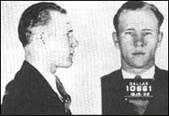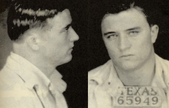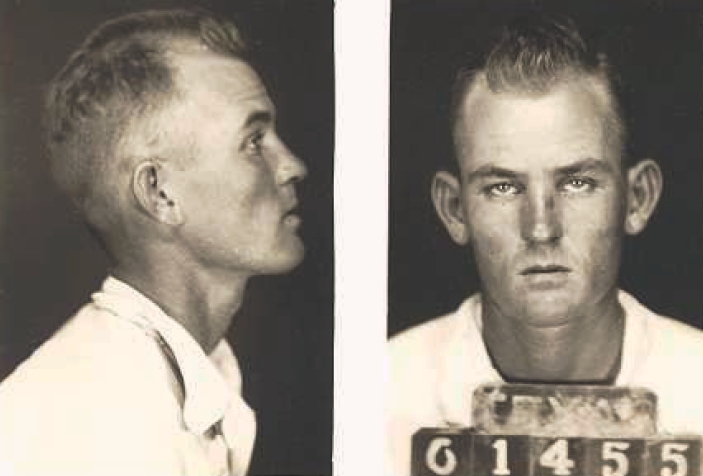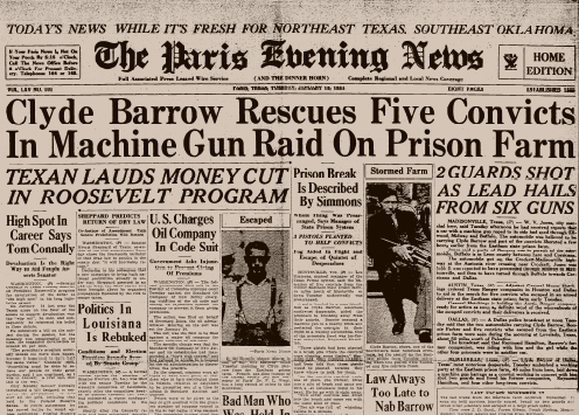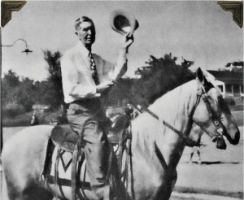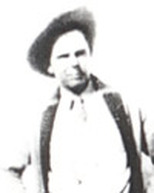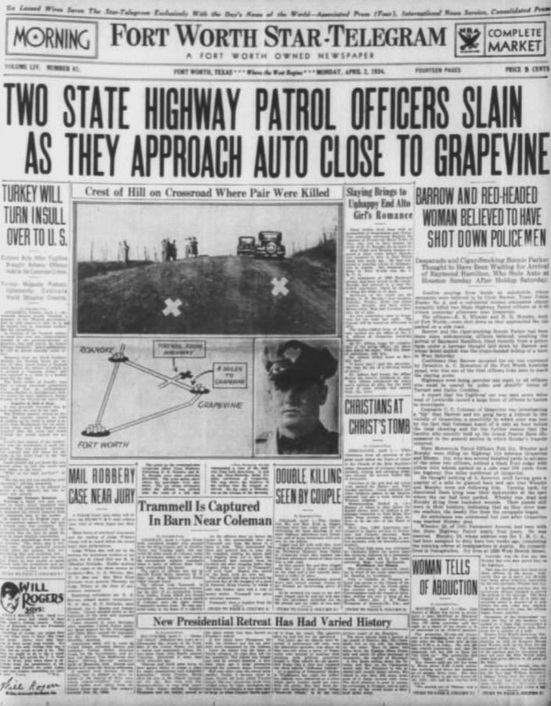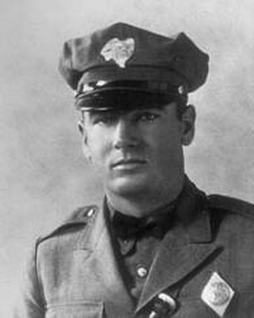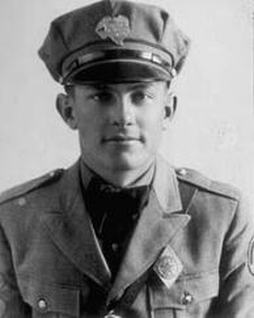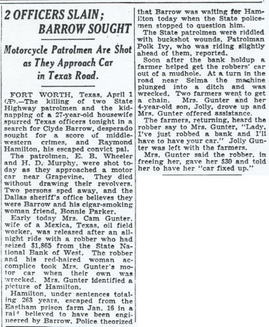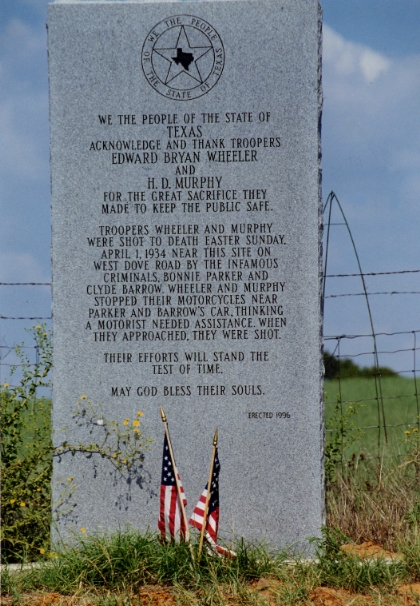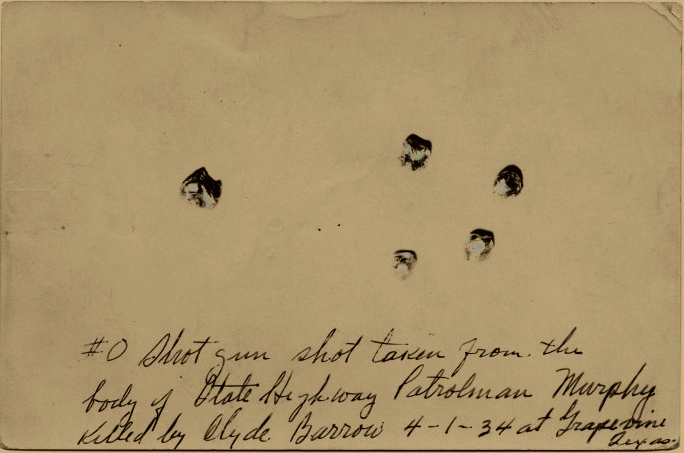Final Run
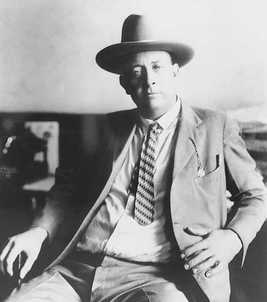
Frank Hamer is pictured in the 1920s.
On Jan. 16, 1934, Barrow finally made his long-contemplated move against the Texas Department of Corrections when he orchestrated the escape of Raymond Hamilton, Henry Methvin, Joe Palmer and several others in the infamous "Eastman Prison Breakout." Many of the escapees, including Hamilton and Methvin, became members of the Barrow gang for brief periods.
The Texas prison system received national negative publicity from the brazen raid, and Barrow appeared to have achieved the burning passion in his life: exacting revenge on the Texas Department of Corrections which his family said brutalized him when he was an inmate.
During the jailbreak, Palmer shot prison officer Major Joe Crowson. Although Palmer did the shooting, it was this act that set the wheels in motion that would eventually bring down the full power of the Texas and federal governments onto Barrow. As Crowson struggled for life, prison chief Lee Simmons reportedly promised him that all persons involved in the breakout would be hunted down and killed - and all were, except for Methvin, whose life would eventually be exchanged for turning over Barrow and Parker to authorities.
Almost immedately after the raid, the TDC contacted retired Texas Ranger Frank A. Hamer and offered him the assignment to get Barrow. Though retired from the Rangers, Hamer had retained his commission and accepted the assignment. He was assigned to the prison system as a special investigator with the specific task of hunting down the Barrow Gang.
Hamer was a true legend in his own time. Tall, burly, cryptic and taciturn, unimpressed by authority and driven by an "inflexible adherence" to what he believed was right, Hamer was, for 20 years, both feared and admired by those on both sides of the law. He was officially credited with 53 kills (including 17 wounds to himself) during his career.
Beginning Feb. 10, Hamer became the constant shadow of Barrow, living out of his car and always just a town or two behind the gang.
Although some members of the public still held a soft spot for Barrow and Parker after the prison break, all that changed on April 1, 1934, Easter Sunday, when Barrow and Methvin killed two young highway patrolmen, H. D. Murphy and Edward Bryant Wheeler, at the intersection of Route 114 and Dove Road near Grapevine, Texas, (now part of the neighboring city of Southlake.)
A farmer, William Schieffer, working nearby in his field, claimed to have witnessed the shootings and said Barrow and Parker fired the fatal shots. Newspapers seized on the eyewitness account, and detailed how Parker "threw back her head and laughed" as the patrolman’s head "bounced like a rubber ball" as she pumped bullets into him. Reports even said a cigar butt had been found at the scene "with tiny little teeth marks in it."
And things got a lot worse several days later when Murphy's intended bride showed up at his funeral wearing her wedding gown. The press went wild.
Meanwhile, the eyewitness' ever-changing account was soon discredited (at one point he identified Raymond Hamilton's brother, Floyd, and Parker's sister, Billie Jean Mace, as the shooters) but it was too late for Barrow and Parker. The massive negative press, especially against Parker, was overwhelming. The tide had turned on the pair.
The Texas prison system received national negative publicity from the brazen raid, and Barrow appeared to have achieved the burning passion in his life: exacting revenge on the Texas Department of Corrections which his family said brutalized him when he was an inmate.
During the jailbreak, Palmer shot prison officer Major Joe Crowson. Although Palmer did the shooting, it was this act that set the wheels in motion that would eventually bring down the full power of the Texas and federal governments onto Barrow. As Crowson struggled for life, prison chief Lee Simmons reportedly promised him that all persons involved in the breakout would be hunted down and killed - and all were, except for Methvin, whose life would eventually be exchanged for turning over Barrow and Parker to authorities.
Almost immedately after the raid, the TDC contacted retired Texas Ranger Frank A. Hamer and offered him the assignment to get Barrow. Though retired from the Rangers, Hamer had retained his commission and accepted the assignment. He was assigned to the prison system as a special investigator with the specific task of hunting down the Barrow Gang.
Hamer was a true legend in his own time. Tall, burly, cryptic and taciturn, unimpressed by authority and driven by an "inflexible adherence" to what he believed was right, Hamer was, for 20 years, both feared and admired by those on both sides of the law. He was officially credited with 53 kills (including 17 wounds to himself) during his career.
Beginning Feb. 10, Hamer became the constant shadow of Barrow, living out of his car and always just a town or two behind the gang.
Although some members of the public still held a soft spot for Barrow and Parker after the prison break, all that changed on April 1, 1934, Easter Sunday, when Barrow and Methvin killed two young highway patrolmen, H. D. Murphy and Edward Bryant Wheeler, at the intersection of Route 114 and Dove Road near Grapevine, Texas, (now part of the neighboring city of Southlake.)
A farmer, William Schieffer, working nearby in his field, claimed to have witnessed the shootings and said Barrow and Parker fired the fatal shots. Newspapers seized on the eyewitness account, and detailed how Parker "threw back her head and laughed" as the patrolman’s head "bounced like a rubber ball" as she pumped bullets into him. Reports even said a cigar butt had been found at the scene "with tiny little teeth marks in it."
And things got a lot worse several days later when Murphy's intended bride showed up at his funeral wearing her wedding gown. The press went wild.
Meanwhile, the eyewitness' ever-changing account was soon discredited (at one point he identified Raymond Hamilton's brother, Floyd, and Parker's sister, Billie Jean Mace, as the shooters) but it was too late for Barrow and Parker. The massive negative press, especially against Parker, was overwhelming. The tide had turned on the pair.
Of the shooting, Parker later told her family that she was sitting in the front seat of the car when the motorcycles approached. Barrow was sleeping in the back and Methvin, she said, was outside standing near the driver's door. She said she woke up Barrow and he said, "Let's take them," allegedly meaning kidnap him. Methvin misunderstood and began firing.
Methvin, himself, later admitted he fired the first shots, after assuming Barrow wanted the officers killed; he also said Parker approached the dying officers, but he said it was with the intention of helping them, not to administer the point-blank shots the discredited eyewitness had described.
Another witness, Mrs. Mabel Giggal, who was out for a Sunday drive with her husband, testified that she saw a man standing over the two bodies. She never saw a woman.
Methvin, himself, later admitted he fired the first shots, after assuming Barrow wanted the officers killed; he also said Parker approached the dying officers, but he said it was with the intention of helping them, not to administer the point-blank shots the discredited eyewitness had described.
Another witness, Mrs. Mabel Giggal, who was out for a Sunday drive with her husband, testified that she saw a man standing over the two bodies. She never saw a woman.
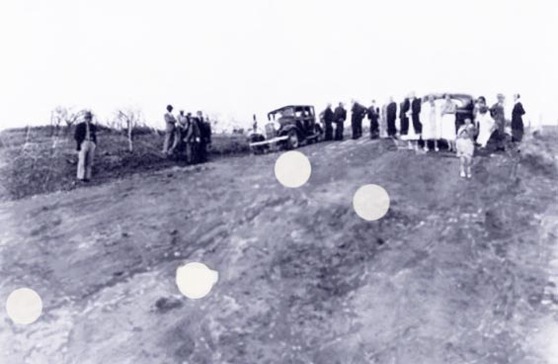
Scene of the Grapevine shootings. The white dots indicate where the troopers and their motorcycles were found. The dot in the lower left is where Murphy's cycle was. His body was just to the right of it. The dot closest to the car is where Wheeler fell. His bike was to his right just below him. Neither had drawn their guns. The car at the left is in the spot where Barrow's car was parked, based on eyewitness accounts and evidence at the scene. This photo, taken by the Dallas Police Department, was taken Monday morning, April 2.
